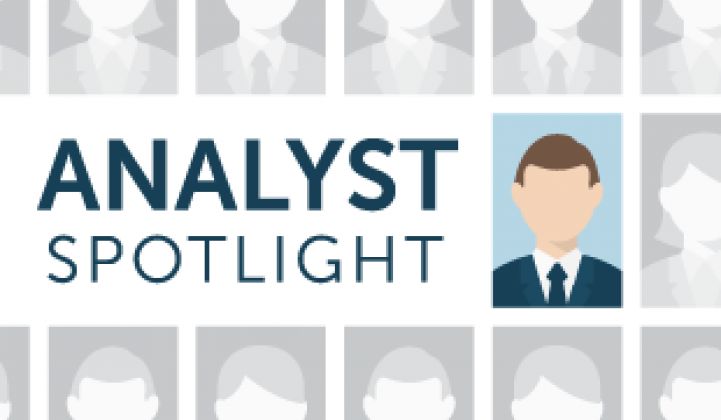For companies like Enphase and SolarEdge, news that module-level power electronics are experiencing a major growth spurt won’t be surprising.
The surging U.S. residential sector has long been a core market for microinverters and DC optimizers, accounting for over one-third of all module-level power electronics shipments (in megawatts) globally for the past couple of years.
Installation and interconnection figures from state programs and utilities are still coming in, but GTM Research expects the 2013 U.S. residential sector to land between 750 and 800 megawatts-DC. (We'll report the official numbers in the forthcoming GTM Research/SEIA Solar Market Insight 2013 Year-in-Review.) Meanwhile, in GTM Research’s recently published report on microinverters and DC optimizers, we estimate combined shipments of microinverters and DC optimizer units destined for U.S. residential systems to have topped 430 megawatts -- well exceeding 50 percent of the installations in the segment.
There are a couple of caveats, of course. First, we measure shipments of microinverters in megawatts-AC as opposed to installations in megawatts-DC. Conversion from one to the other is an imperfect science, but using a rule-of-thumb DC-to-AC derate factor of 0.87, the installation capacity of systems using module-level power electronics approaches 500 megawatts-DC.
This is countered by the fact that shipments do not necessarily equal installations in a calendar year. In a market growing as quickly as the U.S. residential space, shipments will naturally lead and exceed installations, creating significant channel inventory. While pinpointing the exact number of microinverters and DC optimizers sitting in the combined warehouses of vendors, distributors and installers is tricky, we’re confident that microinverters and DC optimizers garnered half of U.S. residential installations, even in conservative scenarios.
Source: The Microinverter and DC Optimizer Landscape 2014
As we outline in The Microinverter and DC Optimizer Landscape 2014, we foresee overall growth of the microinverter and DC optimization sector in the coming year. However, we believe that market share growth may be restrained in 2014 for two reasons:
-- A major slowdown in Hawaii, which has been a mainstay market for module-level power electronics, due to high penetration PV concerns on the part of local utilities.
-- The continued growth of leading third-party residential finance providers (i.e., SolarCity and Sunrun) that have limited their use of module-level power electronics in various ways.
Still, a growing (and sometimes complete) utilization of microinverters and DC optimizers on the parts of newer third-party financiers, most notably Vivint Solar and Clean Power Finance, will ensure that module-level power electronics don’t get left behind. More importantly, a growing number of installers are capturing a value proposition that extends far beyond the cost-benefit of added performance versus added component cost, including system expansion, design flexibility, BOS-related cost reductions and operational efficiency.
A bigger question will be whether other vendors can catch up with the path that Enphase (and to a lesser extent, SolarEdge) have paved in the U.S. residential sector. While Enphase has shipped millions of units, its nearest competitors in the microinverter space are more than an order of magnitude behind. It remains to be seen whether factors such as the bankability claims of ABB/Power-One, the quality of SMA and SolarBridge, and the cost-effectiveness of Chinese vendors like Altenergy Power Systems and ReneSola can ultimately compete with a track record of hundreds of megawatts.
***
The Analyst Spotlight is a new weekly series from GTM Research that will feature data and insight from our solar and grid analysts.



